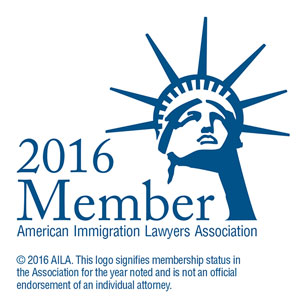The B-1 Visa: Trap for the Tailor, Bricklayer and Tesla Motors
Many have gotten embroiled by the B-1 business visa in different ways. A tailor from Hong Kong who was accused of engaging in unauthorized work successfully argued that taking measurements on behalf of customers was a permissible business activity. Some years later, a union of bricklayers successfully challenged a policy that allowed foreign construction workers to enter the United States on B-1 visas to install equipment purchased from abroad. Very recently, electric car maker Tesla Motors got snared in a B-1 visa quagmire. The innovative company contracted with a German construction company, Eisenmann, which in turn sub contracted with a Slovenian company, ISM Vuzem, to build a new paint shop at Tesla’s plant in Fremont, California. Vuzem in turn facilitated the entry of a Slovenian worker, Gregor Lesnik, on a B-1 business visa to help build Tesla’s new paint shop. This would have gone unnoticed, but for the fact that Lesnik unfortunately suffered a serious injury. It then came to light that he had no qualifications to oversee American workers, despite paperwork that said the contrary.
Although Tesla has not taken responsibility as it contracted with another company to build its paint shop, one frequently sees US businesses embarrassingly stumbling and tripping on the B-1 visa, which is not actually a visa that allows one to work or be employed in the United States. These stumbles also reflect the broken nature of the US immigration system that does not have pathways for businesses to legitimately and expeditiously use the skills of foreign nationals in an increasingly global economy.
The B-1 business visa remains one of the “most ill-defined” visas but still plays a crucial role in providing flexibility to businesses. While the B-1 visa is associated with visiting the United States to participate in meetings and negotiate contracts, it can have broader purposes. For instance, under 8 CFR 214.2(b)(5) and 22 CFR 41.31(b)(1), a foreign national can enter the US on a B-1 visa for “the purpose of supervision or training of others engaged in building or construction work, but not for the purpose of actually performing any building or construction work for themselves.” Lesnik availed himself of the B-1 visa under these regulatory provisions, although he did not come to the United States to supervise, but rather, simply install pipes and welding parts.
The reason why the current regulation insists that the foreign national only enter the United States on a B-1 visa to supervise and train other workers in building and construction work has its genesis in International Union of Bricklayers and Allied Craftsmen v. Meese, 616 F. Supp. 1387 (1985). In that case, the plaintiffs, a union of bricklayers and allied craftsmen, challenged the predecessor to 8 CFR 214.2(b)(5) and 22 CFR 41.31(b)(1). The predecessor was INS Operating Instruction 214.2(b)(5), which permitted a foreign national to come to the United States to “install, service, or repair commercial or industrial equipment or machinery purchased from a company outside the U.S. or to train U.S. workers to perform such service.” This B-1 visa holder under OI 214.2(b)(5) could not receive a salary from a United States sources, except for an expense allowance or other reimbursement of expenses incidental to the temporary stay. The plaintiffs challenged OI 214.2(b)(5) on grounds that it violated 101(a)(15)(B) of the Immigration and Nationality Act (INA), which excluded an alien who is “coming for the purpose of ….performing skilled or unskilled labor.” The plaintiffs alleged that foreign workers in Bricklayers were German nationals coming on B-1 visas to complete the installation of a gold ore processing system that was purchased from a then West German manufacturing company, and thus violated INA 101(a)(15)(B). The plaintiffs also claimed that OI 214.2(b)(5) violated INA 101(a)(15)(H)(ii), which allowed H-2 temporary workers to come to the United States only if unemployed persons capable of performing such service or labor could not be found in the country. The Bricklayers court agreed with the plaintiffs that the OI violated both 101(a)(15)(B) and 101(a)(15(H)(ii) of the INA, and struck it down, notwithstanding the fact that the temporary construction work was incident to installing equipment purchased by a US business from a German company.
After the decision, and after another lawsuit by the Bricklayers Union in the DC Circuit Court of Appeals became moot, legacy INS and the Department of State proposed 8 CFR 214.2(B)(5) and 22 CFR 41.31(b)(1), which restricted B-1 entries relating to construction to only supervisory personnel, and noted the reaction of foreign countries and corporations to the Bricklayers decision:
Following the District Court’s order, which precluded the admission of even the most highly specialized technicians, the Service and the Department of State received communications from U.S. industries and foreign governments which indicated a problem of crisis proportions. Industry predicted that equipment under warranty would not be repaired or serviced, with resultant losses of investment and lay-offs of American workers, and that access to state-of-the-art foreign technology would be limited with resultant losses of competitive position. Foreign governments generally viewed this new restriction as a constraint on trade and hinted at reciprocal action.
The Bricklayers case stands in direct contrast to the Board of Immigration Appeals decision in Matter of Hira, 11 I. & N. Dec. 824. There the BIA held that the term “business” does not include ordinary labor for hire, but is limited to intercourse of a commercial character. The BIA concluded that a Hong Kong based tailor, Mr. Hira, entering with a B-1 visa to “study the US business market”, who on behalf of his employer (a Hong Kong based manufacturer of custom made men’s clothing), took orders from, and the measurements of, prospective customers in the United States whom he did not solicit; and who then sent the orders, together with the purchase price, to his employer overseas, was engaged in “intercourse of a commercial character,” and was eligible for B-1 visitor for business classification. The BIA specifically stated that Hira’s sojourn in the US was of a “temporary character” and he clearly intended to continue his foreign residence at the termination of his authorized stay. The profits of Hira’s B-1 activities also accrued to the foreign entity. The BIA, however, also clarified that the nature of the business activity itself need not be temporary. The BIA held that for B-1 purposes, the business relationship may be of a continuing or long standing nature. The only condition in this respect is that each visit be temporary in duration.
Thus, in Matter of Hira, so long as the performance of skilled or unskilled labor was incident to intercourse of a commercial character, and the labor was tied to and benefitted a foreign business, it was a permissible activity under the B-1 business visa. Still, there is not much of a dividing line between Matter of Hira and the Bricklayers case. In Bricklayers, the labor was tied to and incident to a foreign employer, which had sold equipment to a gold mine in the United States. Matter of Hira clearly appears to be the better decision, and provides a more realistic test of dealing with the short term needs of businesses with global operations. However, with respect to foreign nationals coming to the United States for construction work, they have to be supervisors and must adhere to 8 CFR 214.2(B)(5) and 22 CFR 41.31(b)(1).
The B-1 visa categories, and its many variants, play an important role in filling a gap in the available visa categories for short-term, skilled and professional workers. In addition to permitting supervisors and trainers short term entry into the United States for construction work, other versions like the “B-1 in lieu of the H-1B, “B-1 in lieu of the H-3” and the “B-1 in lieu of the J-1” also provide for short term flexibility for professionals and trainees, and obviate the need for a US employer to file a lengthy petition that is more suitable for longer term employment in the United States. Under all of these B-1 variations, the foreign national has to remain employed by the overseas employer and cannot be paid from a US source, except for expenses. A consul will deny a B-1 visa to one who does not have an intention to return to a foreign residence outside the United States. Critics of the B-1 visa complain that the wages paid to these workers in foreign countries is nothing compared to the wage of a comparable American worker. However, the B-1 visa is meant for very short term assignments while the foreign worker is employed overseas. Longer term employment is only possible under the H-1B or H-2B visa, which mandates that the foreign worker be paid the prevailing wage. If we do not allow such flexibility through the B-1 visa, other countries will retaliate and will not permit US workers the same flexibility in other countries, where US corporations have subsidiaries or export their products and services. At the same time, US companies that contract with foreign firms for foreign labor must perform due diligence to ensure that the foreign workers are properly using the B-1 visa, and if construction work is involved, B-1 visa holders must be providing supervision or training rather than performing any building or construction work themselves.
Despite the Tesla stumble with the B-1 visa, and the unfortunate injury of Lesnik, the visa should be retained and the baby ought not to be thrown out with the bath water. There are laws that exist outside the INA that protect people from being injured at a worksite, and if they do get injured, parties responsible for the injury can and should be held liable. Indeed, the more realistic test under Matter of Hira rather than Bricklayers be adopted so that so that the United States can remain globally competitive by allowing business to be conducted in a seamless and flexible manner. The notion of walling off the United States from the rest of the world, which has become fashionable in many quarters these days and eerily consistent with the Bricklayers case, will ultimately diminish the country’s ability to do business with the rest of the world.




